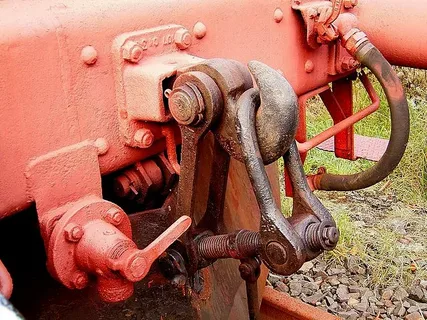Railway Coupler Market Overview
A railway coupler is a mechanical device designed to connect rolling stock within a train, including passenger trains, high-speed trains, and freight trains. These couplers are classified into semi-permanent and automatic railway couplers. Traditionally, they have been manually connected using a hook and link system, with buffers on both ends to absorb and distribute impact forces.
The increasing reliance on imported raw materials for manufacturing finished goods—particularly in countries with limited domestic resources—has boosted the demand for railway freight transport. For example, Sweden’s industrial sector heavily depends on imports, while also focusing on exports to drive revenue. Similarly, Japan experienced a continuous rise in imports between 2010 and 2014, attributed to rapid industrialization. These trends have increased pressure on global freight transport systems, thereby propelling the demand for railway couplers.
Ask For Customization : https://straitsresearch.com/report/railway-coupler-market/request-sample
Market Scope and Research Methodology
This study aims to provide a detailed analysis of the railway coupler market, including current trends, growth drivers, challenges, and opportunities. The research methodology is based on primary and secondary data collection, including industry reports, company financials, and government publications. Additionally, interviews with key stakeholders in the railway manufacturing and logistics sectors have been conducted to validate market insights.
Market Dynamics
The adoption of virtual coupling technology is one of the key factors driving the growth of the railway coupler market. Virtual coupling allows trains to operate closer together without the risk of collisions, optimizing rail network utilization through synchronized movement. This technology improves the efficiency of rail freight services by reducing both travel time and operational costs.
While virtual coupling is still in the research and development phase, several countries are making significant investments in railway projects to improve both domestic and international logistics.
Get Full Report with TOC : https://straitsresearch.com/report/railway-coupler-market/toc
Market Segmentation
The railway coupler market is divided into two categories: semi-permanent and automatic. Semi-permanent couplers provide a permanent mechanical and pneumatic connection between the vehicles. It is not essential to decouple it unless there is an emergency or a maintenance requirement.
By Type
- Semi-permanent
- Automatic
- Manual
In terms of application, the railway coupler market is divided into ordinary passenger trains, high-speed trains, freight trains, and others. A coupler links two carriages in a normal passenger train. This train goes a much shorter distance than others. Couplers are installed in the train to promote safety and give a smooth ride.
By Application
- Regular Passenger Trains
- High-Speed Trains
- Freight Trains
- Subway Trains
- Others
The railway coupler market comprises two sales channels: direct and distribution. A distribution channel is a network of enterprises or intermediaries through which goods or services move before reaching the final consumer. It mostly comprises retailers, wholesalers, distributors, and even the internet. A distribution channel contributes to increasing the product and service portfolio available to end users.
By Sales Channel
- Direct Channel
- Distribution Channel
Get Free Sample Report : https://straitsresearch.com/report/railway-coupler-market/request-sample
Key Players in the Railway Coupler Market
- Dellner Couplers AB
- Escorts Limited
- Nippon Steel & Sumitomo Metal Corporation
- Voith GmbH & Co. KGaA
- The ESCO Group
- A.D. Electrosteel Pvt. Ltd
- Wabtec Corporation
- Titagarh Wagons Limited
Regional Insights
During the forecast period, North America is anticipated to have a substantial proportion of the worldwide railway couplers market because to the quickly growing rail freight business, particularly in the United States and Canada. The governments of these nations are investing a significant amount of money in the construction, upkeep, and expansion of rail freight networks, which will increase demand for railway couplers.
Europe is predicted to grow significantly over the forecast period due to increased demand for high-speed rail as a popular and effective mode of transportation. The TGV is one of the world’s fastest trains, reaching speeds of up to 320 km/h and providing the most expedient method to visit France’s regions.



